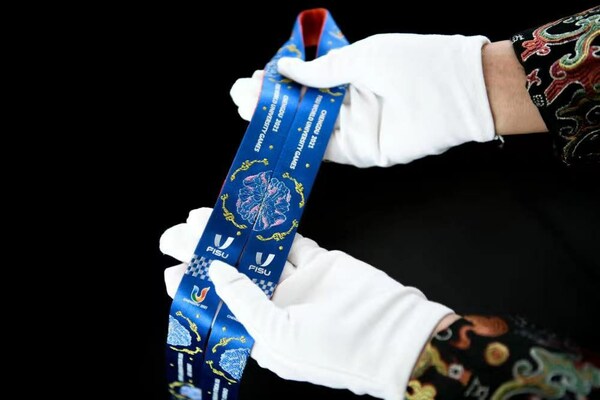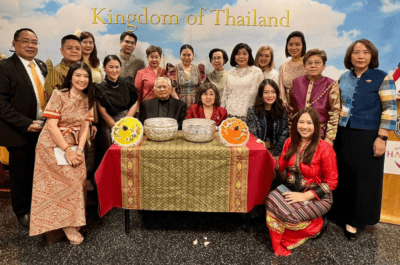CHENGDU, China, July 31, 2023 /PRNewswire/ — On July 29, in the Men’s Nanquan of Wushu tournament, China’s athlete Cao Maoyuan won the first gold medal at the 31st FISU […]
CHENGDU, China, July 31, 2023 /PRNewswire/ — On July 29, in the Men’s Nanquan of Wushu tournament, China’s athlete Cao Maoyuan won the first gold medal at the 31st FISU World University Games with a score of 9.770.
Medal Ribbon of Chengdu FISU Games
Cao Maoyuan stood on the podium, showcasing his glory to the world. The medal around his neck, accompanied by a radiant medal ribbon, caught everyone’s attention. But what makes this seemingly ordinary medal ribbon so remarkable? It’s the embodiment of Chengdu’s cultural charm. According to Hu Guangjun, the director of the Chengdu Shu Brocade Research Institute, the medal ribbon for this edition of the Games has ingeniously incorporated the millennia-old weaving techniques of Shu brocade. Adorned with iconic symbols of Chengdu’s historical and cultural significance, such as hibiscus flowers and sun birds, the ribbon exudes a captivating luster. This transforms China’s intangible cultural heritage into a tangible “Rongguang” (the brilliance of Chengdu) that can be truly appreciated.
Shu brocade weaving skills are China’s national intangible cultural heritage. Dating back to the Han Dynasty, Shu brocade has been a vital “protagonist” in trade along the Silk Road, earning its place as a cultural emblem of Chengdu and a symbol of cultural exchange between the East and West. With the unveiling of the first medal of the Games, Chengdu proudly showcases this cherished cultural business card to the world once again.
This outstanding cultural business card was produced in the workshop of Chengdu Shu Brocade Research Institute in Shuangliu District. According to Hu Guangjun, the location of the Chengdu Shu Brocade Research Institute in Shuangliu stems from its long history of silk culture. During the Three Kingdoms period, renowned strategist Zhuge Liang resided in Gemo Village, Shuangliu, where he emphasized the significance of Shu brocade by stating, “In the current circumstances of impoverishment and an empty treasury, we rely solely on Shu brocade for the necessary materials to confront our enemies.” This highlights the historical importance of Shu brocade at that time. Moreover, a piece of Shu brocade known as “Lianzhu Loong Pattern Brocade” was excavated from the 226th tomb of Astana in Turpan, Xinjiang in the last century. The relic clearly records its origin in Shuangliu, bearing witness to the flourishing and prosperous Shu brocade industry in the Shuangliu region during the Tang Dynasty.
To infuse traditional Shu brocade with a fashionable touch, Hu Guangjun collaborated with a design team composed of Ma Liwa, a teacher, and students from the College of Chinese & ASEAN Arts at Chengdu University. Together, they tirelessly refined and revised the design, from pattern creation to machine production. This meticulous process took nearly six months to complete. Moreover, the transformation of mulberry silk into the medal ribbons required over 70 intricate steps.
Apart from the medal ribbons, the Chengdu Shu Brocade Research Institute has introduced a range of Games-related merchandise crafted from Shu brocade fabrics, including mirrors and bucket hats. These products seamlessly blend traditional culture with contemporary fashion elements, showcasing the progressive charm of Shu brocade. As a result, they have captured the attention of many young individuals who are now eager to explore and appreciate the beauty of Shu brocade.
Image Attachments Links:
Link:
Caption: Medal Ribbon of Chengdu FISU Games




























































![[PR] PR_Ascott and Vimut Hospital_2024](https://www.traveldailynews.asia/wp-content/uploads/2024/04/PR-PR_Ascott-and-Vimut-Hospital_2024-400x265.jpg)







